- Home
- Barbara Ehrenreich
Witches, Midwives, and Nurses Page 3
Witches, Midwives, and Nurses Read online
Page 3
First, consider the charge of sexual crimes. The medieval Catholic Church elevated sexism to a point of principle: The Malleus declares, “When a woman thinks alone, she thinks evil.” The misogyny of the Church, if not proved by the witch craze itself, is demonstrated by its teaching that in intercourse the male deposits in the female a homunculus, or “little person,” complete with soul, which is simply housed in the womb for nine months, without acquiring any attributes of the mother. The homunculus is not really safe, however, until it reaches male hands again, when a priest baptises it, ensuring the salvation of its immortal soul. Another depressing fantasy of some medieval religious thinkers was that upon resurrection all human beings would be reborn as men!
Devil seducing a witch
The Church associated women with sex, and all pleasure in sex was condemned, because it could only come from the devil. Witches were supposed to have gotten pleasure from copulation with the devil (despite the icy-cold organ he was reputed to possess) and they in turn infected men. Lust in either man or wife, then, was blamed on the female. On the other hand, witches were accused of making men impotent and of causing their penises to disappear. As for female sexuality, witches were accused, in effect, of giving contraceptive aid and of performing abortions:Now there are, as it is said in the Papal Bull, seven methods by which they infect with witchcraft the venereal act and the conception of the womb: First, by including the minds of men to inordinate passion; second, by obstructing their generative force; third, by removing the members accommodated to that act; fourth, by changing men into beasts by their magic act; fifth by destroying the generative force in women; sixth, by procuring abortion; seventh, by offering children to the devils, besides other animals and fruits of the earth with which they work much harm . . .
(The Malleus Maleficarum)
In the eyes of the Church, all the witch’s power was ultimately derived from her sexuality. Her career began with sexual intercourse with the devil. Each witch was confirmed at a general meeting (the witches’ Sabbath) at which the devil presided, often in the form of a goat, and had intercourse with the neophytes. In return for her powers, the witch promised to serve him faithfully. (In the imagination of the Church even evil could only be thought of as ultimately male-directed!) As The Malleus makes clear, the devil almost always acts through the female, just as he did in Eden:All witchcraft comes from carnal lust, which in women is insatiable . . . Wherefore for the sake of fulfilling their lusts they consort with devils . . . it is sufficiently clear that it is no matter for wonder that there are more women than men found infected with the heresy of witchcraft . . . And blessed be the Highest Who has so far preserved the male sex from so great a crime . . .
Not only were the witches women—they were women who seemed to be organized into an enormous secret society. A witch who was proved member of the “Devil’s party” was more dreadful than one who had acted alone, and the witch hunting literature is obsessed with the question of what went on at the witches’ “Sabbaths.” (Eating of unbaptised babies? Bestialism and mass orgies? So went their lurid speculations . . . )
In fact, there is evidence that women accused of being witches did meet locally in small groups and that these groups came together in crowds of hundreds or thousands on festival days. Some writers speculate that the meetings were occasions for pagan religious worship. Undoubtedly the meetings were also occasions for trading herbal lore and passing on the news.
Witches and demons dancing in a ring
We have little evidence about the political significance of the witches’ organizations, but it’s hard to imagine that they weren’t connected to the peasant rebellions of the time. Any peasant organization, just by being an organization, would attract dissidents, increase communication between villages, and build a spirit of collectivity and autonomy among the peasants.
WITCHES AS HEALERS
We come now to the most fantastic accusation of all: the witch is accused not only of murdering and poisoning, sex crimes and conspiracy—but of helping and healing. As a leading English witch hunter put it:For this must always be remembered, as a conclusion, that by witches we understand not only those which kill and torment, but all Diviners, Charmers, Jugglers, all Wizards, commonly called wise men and wise women . . . and in the same number we reckon all good Witches, which do no hurt but good, which do not spoil and destroy, but save and deliver . . . It were a thousand times better for the land if all Witches, but especially the blessing Witch, might suffer death.
Witch-healers were often the only general medical practitioners for a people who had no doctors and no hospitals and who were bitterly afflicted with poverty and disease. In particular, the association of the witch and the midwife was strong: “No one does more harm to the Catholic Church than midwives,” wrote witch hunters Kramer and Sprenger.
The Church itself had little to offer the suffering peasantry:On Sundays, after Mass, the sick came in scores, crying for help, - and words were all they got: “You have sinned, and God is afflicting you. Thank him; you will suffer so much less torment in the life to come. Endure, suffer, die. Has not the Church its prayers for the dead?”
(Jules Michelet, Satanism and Witchcraft)
When faced with the misery of the poor, the Church turned to the dogma that experience in this world is fleeting and unimportant. But there was a double standard at work, for the Church was not against medical care for the upper class. Kings and nobles had their court physicians who were men, sometimes even priests. The real issue was control: male upper-class healing under the auspices of the Church was acceptable, female healing as part of a peasant subculture was not.
Witch preparing a potion
The Church saw its attack on peasant healers as an attack on magic, not medicine. The devil was believed to have real power on earth, and the use of that power by peasant women—whether for good or evil—was frightening to the Church and State. The greater their satanic powers to help themselves, the less they were dependent on God and the Church, and the more they were potentially able to use their powers against God’s order. Magic charms were thought to be at least as effective as prayer in healing the sick, but prayer was Church-sanctioned and controlled while incantations and charms were not. Thus magic cures, even when successful, were an accursed interference with the will of God, achieved with the help of the devil, and the cure itself was evil. There was no problem in distinguishing God’s cures from the devil’s, for obviously the Lord would work through priests and doctors rather than through peasant women.
The wise woman, or witch, had a host of remedies which had been tested in years of use. Many of the herbal remedies developed by witches still have their place in modern pharmacology. They had pain-killers, digestive aids, and anti-inflammatory agents. They used ergot for the pain of labor at a time when the Church held that pain in labor was the Lord’s just punishments for Eve’s original sin. Ergot derivatives are the principal drugs used today to hasten labor and aid in the recovery from childbirth. Belladonna—still used today as an anti-spasmodic—was used by the witch-healers to inhibit uterine contractions when miscarriage threatened. Digitalis, still an important drug in treating heart ailments, is said to have been discovered by an English witch. Undoubtedly many of the witches’ other remedies were purely magical, and owed their effectiveness—if they had any—to their reputation.
The witch-healer’s methods were as great a threat (to the Catholic Church, if not the Protestant) as her results, for the witch was an empiricist: she relied on her senses rather than on faith or doctrine, she believed in trial and error, cause and effect. Her attitude was not religiously passive, but actively inquiring. She trusted her ability to find ways to deal with disease, pregnancy, and childbirth—whether through medications or charms. In short, her magic was the science of her time.
The Church, by contrast, was deeply anti-empirical. It discredited the value of the material world, and had a profound distrust of the senses. There was no point in looking for natural laws that gov
ern physical phenomena, for the world is created anew by God in every instant. Kramer and Sprenger, in The Malleus, quote St. Augustine on the deceptiveness of the senses:. . . Now the motive of the will is something perceived through the senses or the intellect, both of which are subject to the power of the devil. For St. Augustine says in Book 83: This evil, which is of the devil, creeps in by all the sensual approaches; he places himself in figures, he adapts himself to colors, he attaches himself to sounds, he lurks in angry and wrongful conversation, he abides in smells, he impregnates with flavours and fills with certain exhalations all the channels of the understanding.
The senses are the devil’s playground, the arena into which he will try to lure men away from Faith and into the conceits of the intellect or the delusions of carnality.
In the persecution of the witch, the anti-empiricist and the misogynist, anti-sexual obsessions of the Church coincide: empiricism and sexuality both represent a surrender to the senses, a betrayal of faith. The witch was a triple threat to the Church: She was a woman, and not ashamed of it. She appeared to be part of an organized underground of peasant women. She was a healer whose practice was based in empirical study. In the face of the repressive fatalism of Christianity, she held out the hope of change in this world.
THE RISE OF THE EUROPEAN MEDICAL PROFESSION
While witches practiced among the people, the ruling classes were cultivating their own breed of secular healers: the university-trained physicians. In the century that preceded the beginning of the “witch craze”—the thirteenth century—European medicine became firmly established as a secular science and a profession. The medical profession was actively engaged in the elimination of female healers—their exclusion from the universities, for example—long before the witch hunts began.
For eight long centuries, from the fifth to the thirteenth, the otherworldly, anti-medical stance of the Church has stood in the way of the development of medicine as a respectable profession. Then, in the thirteenth century, there was a revival of learning, touched off by contact with the Arab world. Medical schools appeared in the universities, and more and more young men of means sought medical training. The church imposed strict controls on the new profession, and allowed it to develop only within the terms set by Catholic doctrine. University-trained physicians were not permitted to practice without calling in a priest to aid and advise them, or to treat a patient who refused confession. By the fourteenth century their practice was in demand among the wealthy, as long as they continued to take pains to show that their attention to the body did not jeopardize the soul. In fact, accounts of their medical training make it seem more likely that they jeopardized the body.
There was nothing in late medieval medical training that conflicted with church doctrine, and little that we would recognize as “science.” Medical students, like other scholarly young gentlemen, spent years studying Plato, Aristotle, and Christian theology. Their medical theory was largely restricted to the works of Galen, the ancient Roman physician who stressed the theory of “complexions” or “temperaments” of men, “wherefore the choleric are wrathful, the sanguine are kindly, the melancholy are envious,” and so on. While a student, a doctor rarely saw any patients at all, and no experimentation of any kind was taught. Medicine was sharply differentiated from surgery, which was almost everywhere considered a degrading, menial craft, and the dissection of bodies was almost unheard of.
The humors: sanguine, melancholy, hot-tempered, sluggish
Confronted with a sick person, the university-trained physician had little to go on but superstition. Bleeding was a common practice, especially in the case of wounds. Leeches were applied according to the time, the hour, the air, and other similar considerations. Medical theories were often grounded more in “logic” than in observation: “Some food brought on good humors, and others, evil humours. For example, nasturtium, mustard, and garlic produced reddish bile; lentils, cabbage and the meat of old goats and beeves begot black bile.” Incantations, and quasi-religious rituals were thought to be effective: the physician to Edward II, who held a bachelor’s degree in theology and a doctorate in medicine from Oxford, prescribed for toothache writing on the jaws of a patient, “In the name of the Father, the Son, and the Holy Ghost, Amen,” or touching a needle to a caterpillar and then to the tooth. A frequent treatment for leprosy was a broth made of the flesh of a black snake caught in a dry land among stones.
Such was the state of medical “science” at the time when witch-healers were persecuted for being practitioners of “magic.” It was witches who developed an extensive understanding of bones and muscles, herbs and drugs, while physicians were still deriving their prognoses from astrology and alchemists were trying to turn lead into gold. So great was the witches’ knowledge that in 1527, Paracelsus, considered the “father of modern medicine,” burned his text on pharmaceuticals, confessing that he “had learned from the Sorceress all he knew.”
The benefits of bleeding
THE SUPPRESSION OF WOMEN HEALERS
The establishment of medicine as a profession, requiring university training, made it easy to bar women legally from practice. With few exceptions, the universities were closed to women (even to upper-class women who could afford them), and licensing laws were established to prohibit all but university-trained doctors from practice. It was impossible to enforce the licensing laws consistently since there were only a handful of university-trained doctors compared to the great mass of lay healers. But the laws could be used selectively. Their first target was not the peasant healer, but the better off, literate woman healer who competed for the same urban clientele as that of the university-trained doctors.
Take, for example, the case of Jacoba Felicie, brought to trial in 1322 by the Faculty of Medicine at the University of Paris, on charges of illegal practice. Jacoba was literate and had received some unspecified “special training” in medicine. That her patients were well off is evident from the fact that (as they testified in court) they had consulted well-known university-trained physicians before turning to her. The primary accusations brought against her were that. . . she would cure her patient of internal illness and wounds or of external abscesses. She would visit the sick assiduously and continue to examine the urine in the manner of physicians, feel the pulse, and touch the body and limbs.
Six witnesses affirmed that Jacoba had cured them, even after numerous doctors had given up, and one patient declared that she was wiser in the art of surgery and medicine than any master physician or surgeon in Paris. But these testimonials were used against her, for the charge was not that she was incompetent, but that—as a woman—she dared to cure at all.
Along the same lines, English physicians sent a petition to Parliament bewailing the “worthless and presumptuous women who usurped the profession” and asking the imposition of fines and “long imprisonment” on any woman who attempted to “use the practyse of Fisyk.” By the fourteenth century, the medical profession’s campaign against urban, educated women healers was virtually complete throughout Europe. Male doctors had won a clear monopoly over the practice of medicine among the upper classes (except for obstetrics, which remained the province of female midwives even among the upper classes for another three centuries). They were ready to take on a key role in the elimination of the great mass of female healers—the “witches.”
Woman treating dislocated jaw
The partnership between Church, State, and medical profession reached full bloom in the witch trials. The doctor was held up as the medical “expert,” giving an aura of science to the whole proceeding. He was asked to make judgments about whether certain women were witches and whether certain afflictions had been caused by witchcraft. The Malleus says: “And if it is asked how it is possible to distinguish whether an illness is caused by witchcraft or by some natural physical defect, we answer that the first [way] is by means of the judgment of doctors . . . ” [Emphasis added]. In the witch hunts, the Church explicitly legitimized the doctors’
professionalism, denouncing non-professional healing as equivalent to heresy: “If a woman dare to cure without having studied she is a witch and must die.” (Of course, there wasn’t any way for a woman to study.) Finally, the witch craze provided a handy excuse for the doctor’s failings in everyday practice: Anything he couldn’t cure was obviously the result of sorcery.
The distinction between “female” superstition and “male” medicine was made final by the very roles of the doctor and the witch at the trial. The trial in one stroke established the male physician on a moral and intellectual plane vastly above the female healer he was called to judge. It placed him on the side of God and Law, a professional on par with lawyers and theologians, while it placed her on the side of darkness, evil, and magic. He owed his new status not to medical or scientific achievements of his own, but to the Church and State he served so well.
THE AFTERMATH
Witch hunts did not eliminate the lower-class woman healer, but they branded her forever as superstitious and possibly malevolent. So thoroughly was she discredited among the emerging middle classes that in the seventeenth and eighteenth centuries it was possible for male practitioners to make serious inroads into that last preserve of female healing—midwifery. Nonprofessional male practitioners—“barber-surgeons”—led the assault in England, claiming technical superiority on the basis of their use of the obstetrical forceps. (The forceps were legally classified as a surgical instrument, and women were legally barred from surgical practice.) In the hands of the barber-surgeons, obstetrical practice among the middle class was quickly transformed from a neighborly service into a lucrative business, which real physicians entered in force in the eighteenth century. Female midwives in England organized and charged the male intruders with commercialism and dangerous misuse of the forceps. But it was too late—the women were easily put down as ignorant “old wives” clinging to the superstitions of the past.

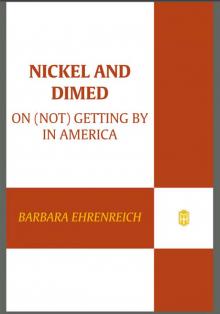 Nickel and Dimed: On (Not) Getting by in America
Nickel and Dimed: On (Not) Getting by in America Living With a Wild God
Living With a Wild God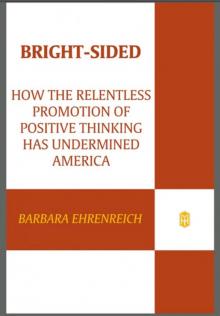 Bright-Sided
Bright-Sided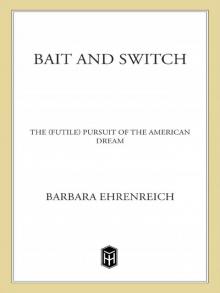 Bait and Switch: The (Futile) Pursuit of the American Dream
Bait and Switch: The (Futile) Pursuit of the American Dream Dancing in the Streets: A History of Collective Joy
Dancing in the Streets: A History of Collective Joy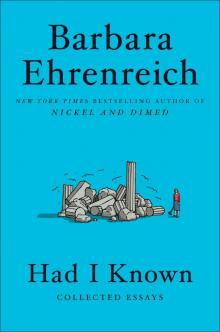 Had I Known
Had I Known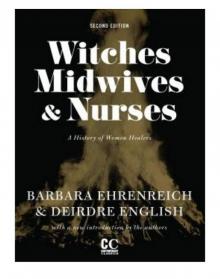 Witches, Midwives, and Nurses
Witches, Midwives, and Nurses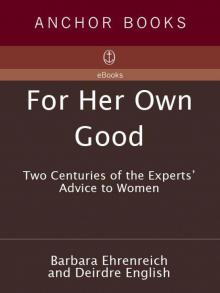 For Her Own Good: Two Centuries of the Experts Advice to Women
For Her Own Good: Two Centuries of the Experts Advice to Women Nickel and Dimed
Nickel and Dimed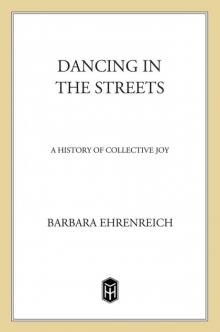 Dancing in the Streets
Dancing in the Streets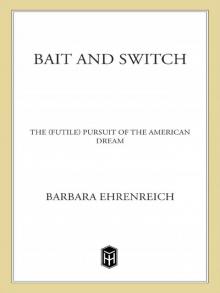 Bait and Switch
Bait and Switch